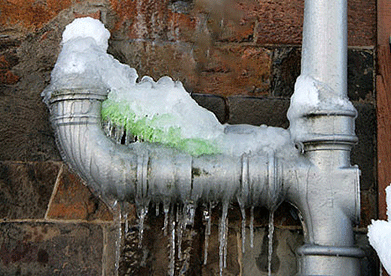
Introduction:
As winter approaches, it’s crucial to protect your home from potential cold-weather damage. One often overlooked task is winterizing exterior faucets. With a few simple do-it-yourself steps, you can safeguard your plumbing system and prevent costly repairs. Let’s explore a comprehensive guide to winterizing your exterior faucets.
Understanding the Importance of Winterization:
Winterizing exterior faucets is essential to prevent freezing and bursting of pipes. When water freezes inside the pipes, it expands, creating pressure that can cause pipes to crack or burst. By taking proactive measures to winterize your faucets, you can avoid these issues and ensure your plumbing system remains intact during the cold winter months.
Gathering Necessary Tools and Materials:
Before starting the winterization process, gather the necessary tools and materials. You’ll typically need a hose, faucet covers, insulation, and a screwdriver. Ensure you have the correct size and type of cover for each exterior faucet. Having everything ready beforehand will streamline the process and make your DIY winterization efforts more efficient.
Disconnecting Hoses and Draining Water:
Begin the winterization process by disconnecting hoses from exterior faucets. Leaving hoses attached can trap water inside the faucet and pipes, increasing the risk of freezing. Once hoses are removed, open the exterior faucets to allow any remaining water to drain out. This simple step can go a long way in preventing potential freezing issues.
Installing Faucet Covers:
Faucet covers act as insulation, providing a protective barrier against the cold. After draining the water, install faucet covers on each exterior faucet. These covers are typically made of foam or other insulating materials and can be easily secured in place. Make sure the covers are snug to create an effective barrier against freezing temperatures.
Insulating Exposed Pipes:
In regions with extremely cold temperatures, additional insulation for exposed pipes can be beneficial. Use pipe insulation sleeves to cover any exposed pipes leading to exterior faucets. This added layer of insulation helps retain heat and further protects the pipes from freezing. It’s a simple yet effective measure to fortify your plumbing system against winter’s chill.
Securing Additional Protection with Heat Tape:
For extra protection in extremely cold climates, consider using heat tape on exposed pipes. Heat tape is an electrical heating element that can be wrapped around pipes to provide warmth and prevent freezing. Use heat tape according to the manufacturer’s instructions and ensure it is installed correctly for optimal effectiveness.
Checking for Leaks and Repairs:
As part of your winterization routine, take the opportunity to check for any leaks or signs of damage around exterior faucets. Addressing minor issues now can prevent more significant problems in the future. Repair any leaks promptly, and consider consulting a professional plumber if you encounter complex issues during your inspection.
Seeking Professional Assistance if Needed:
While many aspects of winterizing exterior faucets can be done as a DIY project, it’s important to recognize when professional assistance is required. If you’re unsure about certain aspects of winterization or if you encounter plumbing issues beyond your expertise, don’t hesitate to consult a licensed plumber for guidance and assistance.
Winterize Exterior Faucets DIY:
Take the proactive step of winterizing your exterior faucets yourself to ensure a smoothly running plumbing system throughout winter. This simple DIY process can save you from potential headaches and costly repairs. Embrace the winterization routine and protect your home from the harsh effects of cold weather.
Conclusion:
Winterizing exterior faucets is a crucial task that should not be overlooked as winter approaches. By understanding the importance of winterization, gathering the necessary tools, and following a step-by-step process, you can safeguard your plumbing system from freezing temperatures. Embrace the DIY spirit, and take the necessary measures to protect your home and ensure a worry-free winter.










